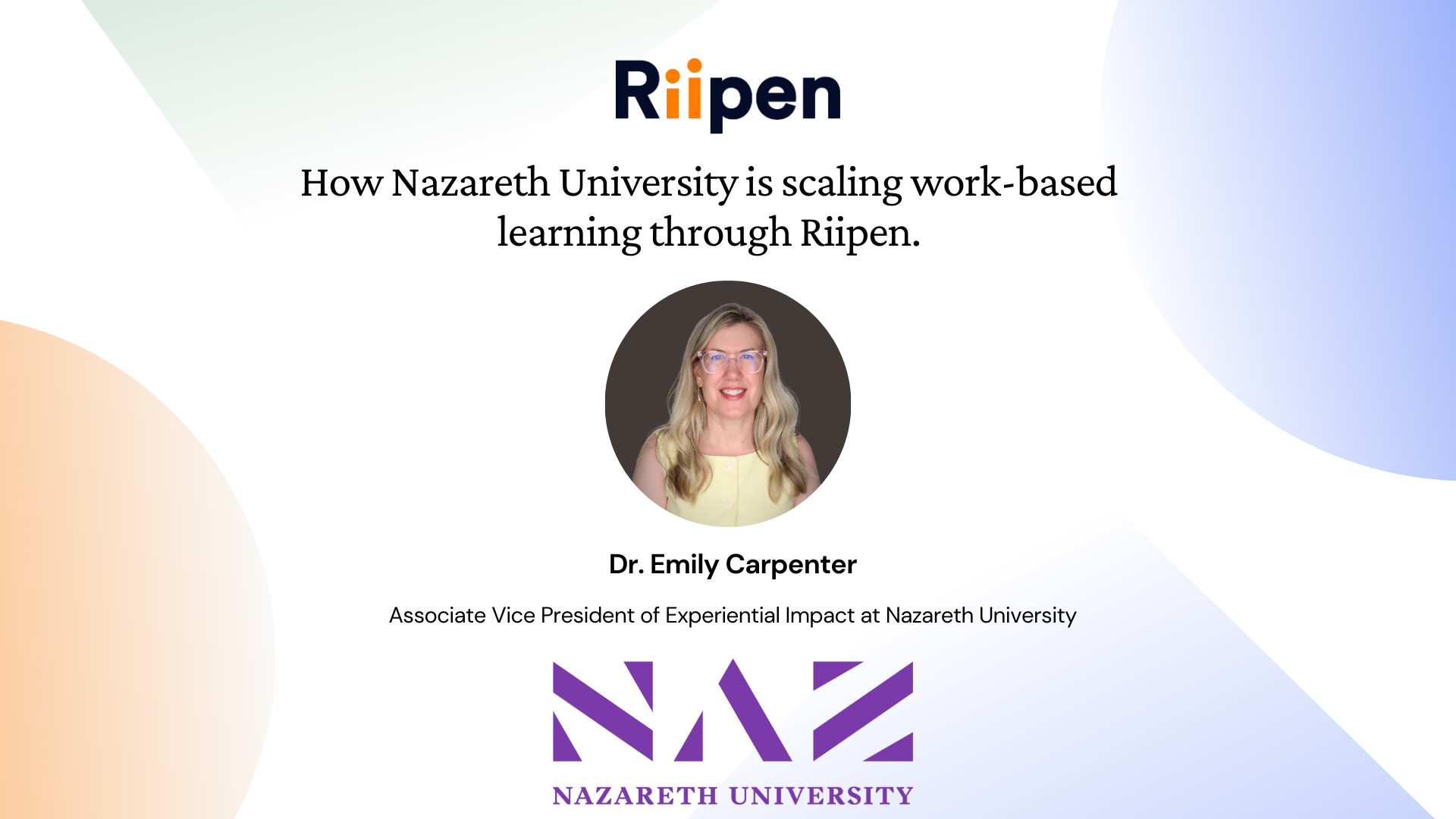An innovative approach to integrating sustainability in higher ed.

As centers of innovation, leading colleges and universities are adopting a “sustainability lens” across their campuses to educate our next generation of socially responsible leaders, prepare students for careers of the future, and differentiate themselves from other post-secondary institutions of learning.
At the core of these efforts are the United Nations Sustainable Development Goals (UN SDGs). Developed in 2015, the 17 UN SDGs serve as a roadmap for creating a world where individual rights and well-being are assured, and our planet thrives for future generations.
Work-Integrated Learning (WIL) supports SDGs.
In recent years, associations like Colleges & Institutes Canada (CICan) and AACSB have actively guided higher education institutions towards embracing sustainability, but integrating the UN SDGs into core academic programs is no easy task. The goals permeate all subject areas, and many faculty have not traditionally included sustainability in their course curriculum. Yet given the broad scope of the UN SDGs and the urgency of these global challenges, it’s important that students explore career pathways through a “sustainability lens”.
Work-integrated learning programs—including internships, applied research, service learning, and industry research projects— can help. These real-world learning experiences supplement classroom instruction by giving learners the opportunity to discover careers in sustainability and how they, as individuals, can make an impact.
Here at Riipen, we’ve seen the profound impact WIL projects in sustainability can have. Learners using our experiential learning platform have worked on projects that addressed the following UN SDGs”
- Quality education (Goal 4): Social entrepreneurship students at McGill University worked with a startup to provide free Wi-Fi access to educational content in regions around the world where internet service and electricity is problematic. They researched specific areas to localize the business plan, formalized a go-to-market strategy, determined the key elements for a sales pitch, and drafted communications.
- Responsible consumption and production (Goal 12): Accounting students at Schulich School of Business worked with a trade association to assess the environmental impact of food trucks. They researched and analyzed energy consumption, waste management, and sustainable construction practices; evaluated the efficiency of resource utilization and waste reduction; identified what consumers expect in terms of sustainable practices (e.g. sourcing local ingredients, offering eco-friendly packaging, etc.); and developed a self-assessment tool and plan for food truck operators to improve their performance against the UN SDGs.
- Peace, justice, and strong institutions (Goal 16): Religion students at Lane College worked with a non-profit organization in Georgia to teach at-risk and violent youth how to be peaceful leaders in their schools and communities. Students researched psychological, theological, and philosophical information to develop projects geared toward cultivating community development, empowerment, and reconciliation practices; created a curriculum that incorporates religious and peacemaking skills; designed lesson plans to teach the curriculum to at-risk and violent youth; and crafted strategies to help the youth apply the skills they learned in their schools and communities.
And that’s just the start. Imagine what students could learn and accomplish by helping a municipal climate action network expand (Sustainable cities and communities, Goal 11) or researching business models for providing medical services in under-developed African countries (Good health and well-being, Goal 3)—two projects currently listed on Riipen’s platform. The possibilities are endless.
Benefits for students, institutions, and our world.
WIL projects like these provide countless benefits to students. Not only do students get the opportunity to apply what they’ve learned in the classroom, enhance their soft skills like collaboration and time management, and gain resume worthy industry experience, they develop a sustainability mindset and skillset that is increasingly in demand. According to a recent global survey, 61% of C-suite leaders said that climate change will have a high/very high impact on their organization’s strategy and operations over the next three years, indicating job candidates with sustainability experience will be highly sought after.
Colleges and universities also benefit from WIL programs that support the UN SDGs. At a time when institutions face declining enrollments due to decreased populations of traditional-age students and intense competition, offering programs that appeal to Gen Z’s who prioritize sustainability (73% are taking action to minimize their impact on the environment) can differentiate them from other institutions, attracting prospective students as well as improving retention and completion rates.
From a broader perspective, the civic advantages and social impact of WIL are substantial. Engaging students in experiential learning through sustainability projects can increase their likelihood to participate in civic activities such as voting and volunteering. It also enhances their awareness of local and global issues and equips them with the problem-solving skills necessary to tackle these challenges.
A new era in higher education.
As leaders in the higher education ecosystem, our path is clear. Now is the time to embrace sustainability if we want to secure a future of prosperity and peace. To do this, we need to co-create new learning experiences that prepare students not only for careers of the future but encourage them to be contributors to a better society. Work-integrated learning projects focused on the UN SDGs are just one example of how we can accomplish this lofty goal.
Working together, we can redefine the role of education, empowering students to have meaningful and successful careers, higher education institutions to prosper, and our world to flourish.
Click here to learn more about the benefits of work-integrated learning programs.










.png)



























